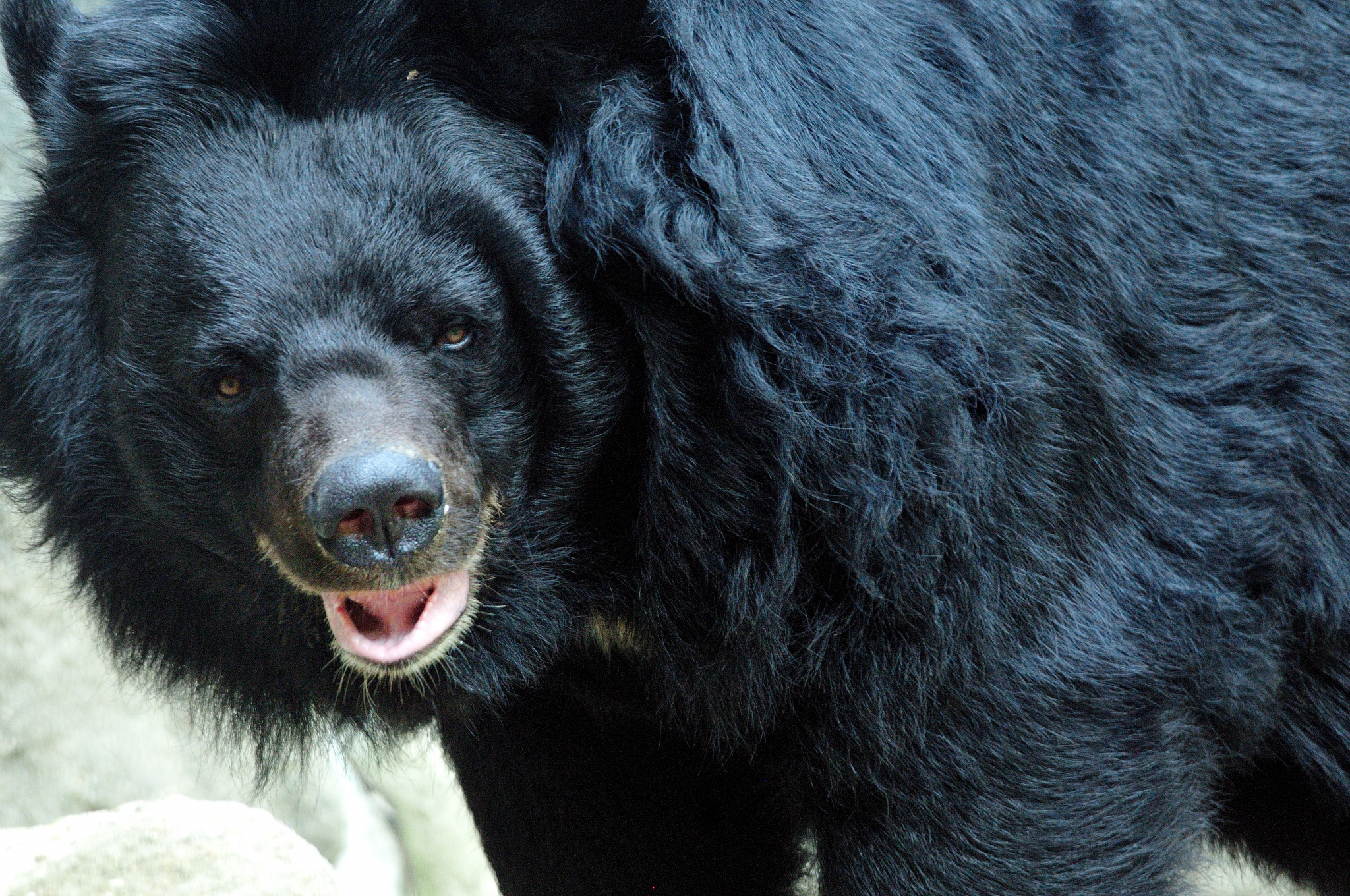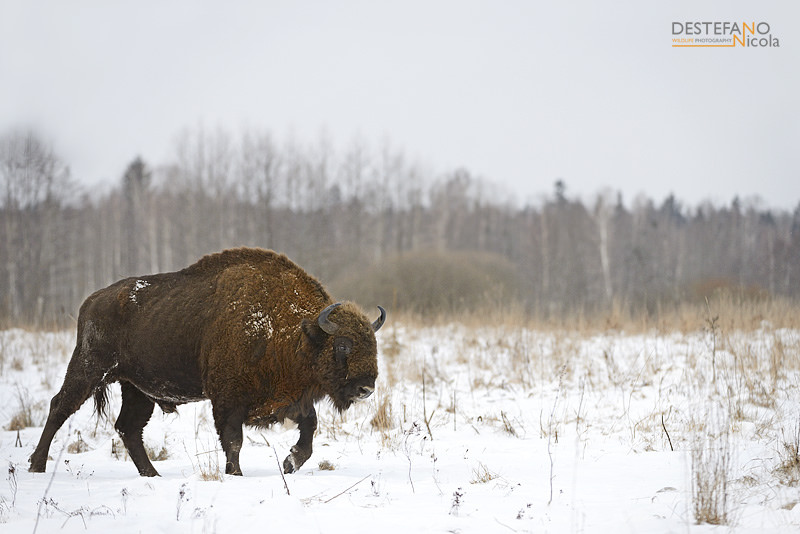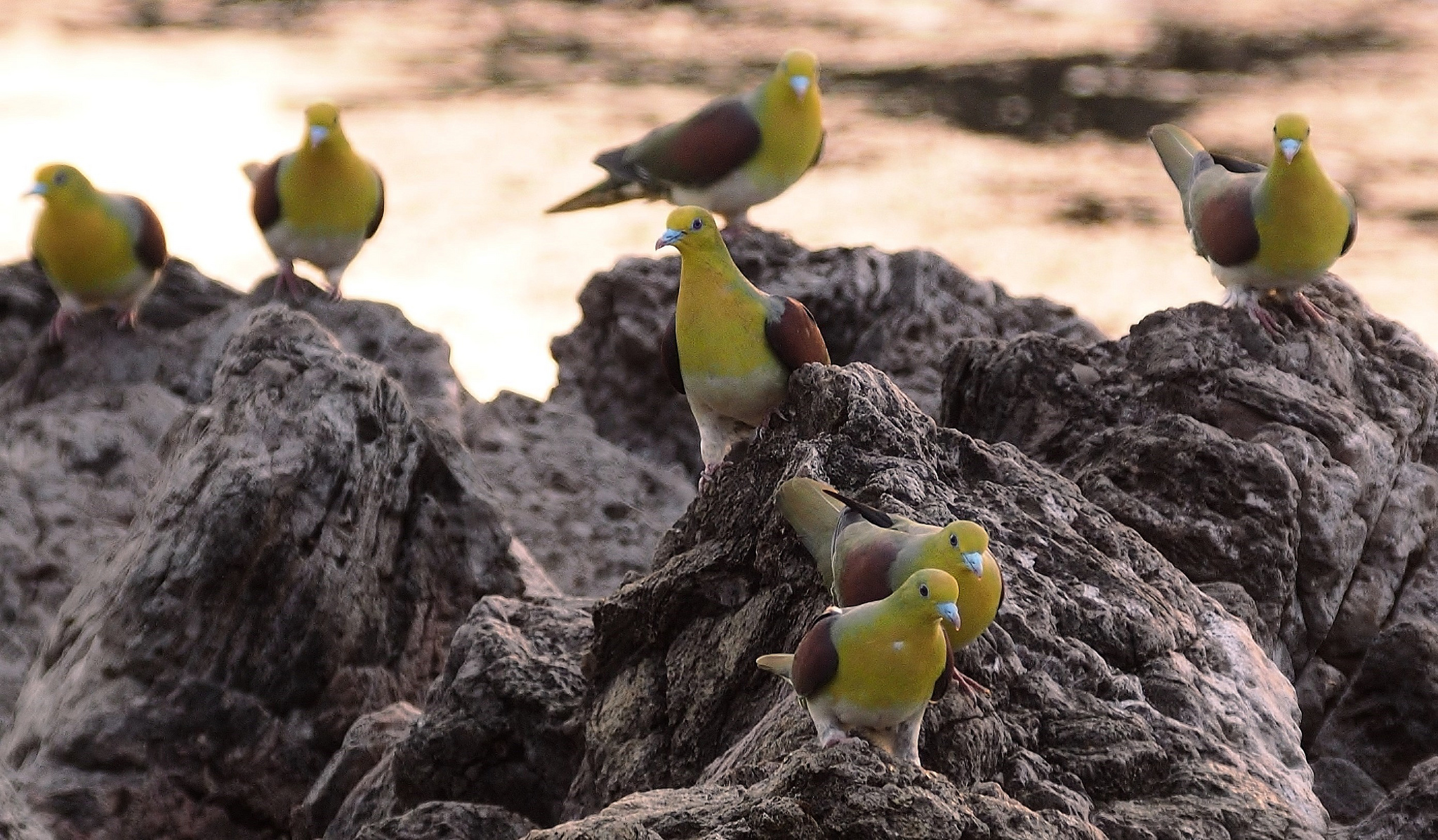Rare plants of Russia. Rare plants of Russia: photos
Moscow State
University named after M.V. Lomonosov
Ministry of Natural Resources
resources and ecology
Russian Federation
Biological
Faculty of Moscow State University
Contributing authors:
T.A. Nazarevskaya,
G.A.Belyakova,
D.N.Kavtarazde,
S.V. Ogurtsov,
E.L. Rostovtseva,
V.V.Chub
ANO Development Center
childhood and adolescence
"Your Nature"
Please fill in
questionnaire in the Answer Sheet on the right:
City___________________
School No._______Class_______
Surname___________________
Name___________________
Surname___________________
Question 1. What plant is shown on the icon?
Baikal State Natural Biosphere
reserve score?
A) anemone
Baikal;
b) anemone
oak forest;
c) anemone
buttercup;
d) skull cap
Baikal
Question 2. What is shown on the Ussuri badge
State Nature Reserve named after V.L. Komarov?
a) big panda
and rose leaves;
b) brown bear
and wild garlic leaves;
c) Himalayan
bear
and ginseng leaves;
d) Amur
(Ussurian tiger
and chestnut leaves.
Question 3. What is depicted on the emblem of Astrakhan
Biosphere State Reserve?
point Select one correct answer:
A) rose of May
and a white stork;
b) peony
evasive
(Maryin root)
and Dalmatian pelican;
c) oriental poppy
and a great bittern;
d) Caspian lotus
and big white
heron.
Question 4. Before you are several photographs of rare
Protected animals of Russia. The map of Russia shows
points three reserves. Which one is guarding each of these?
animals? Consider that one reserve corresponds to
one animal.
1. Barguzinsky sable
2. Steller's sea eagle
3. Bison
Question 5. What does exposure to loud noise lead to?
Per person? Choose one correct answer:
a) leads to weakening of attention and memory;
b) reduces the stability of visual acuity;
c) violates the accuracy of distance estimation;
d) disrupts coordination of movements;
d) all answers are correct.
Question 6. Arrange the listed organisms
As the average life expectancy increases.
points Write the letters corresponding to the animals in the correct
order:
a) cat;
b) person;
c) rat;
d) cow.
Lifespan
Question 7. Which of the following animals gives
Most offspring from a pair of individuals?
point Select one correct answer:
A) grass frog;
B) bank vole;
B) African elephant;
D) viviparous lizard.
Question 8. Which bird specializes?
Gathering food from the ground?
points Select one correct answer:
A) pied flycatcher;
B) white-browed thrush;
B) warbler rattle;
D) common pika.
Question 9. Which birds make nests in burrows?
Choose one correct answer:
B) black-headed warbler;
a) great spotted woodpecker;
B) shore swallow;
D) gray flycatcher.
Question 10. The housewife threw the following types of household waste into the trash bin:
b) orange
crusts;
G
d) empty
tin
from fish
canned food
B) polyethylene
a) broken
bottle
wood
from shampoo;
chair;
Then all this solid waste was taken to a garbage dump.
Arrange the types of waste starting with those that will decompose.
in aerobic conditions fastest,
to those that will decompose later
the rest. Write down the letters,
corresponding to the types of waste,
Decomposition time
in the right order:
Question 11. Some types of feather grass are under
Security. Indicate the main reason for the reduction of natural resources
Feather grass populations score. Choose one correct answer:
a) illegal collection of medicinal raw materials;
b) illegal collection of flowers for bouquets;
c) plowing natural places feather grass growth;
d) reduction in the number of pollinating insects.
Question 12. Domestic waste dumps are often visited
Crows, jackdaws and seagulls. What consequences can
points lead to a decline in the number of these birds?
Choose one correct answer:
A) to an increase in the number of rats;
b) to a decrease in the number of pigeons;
c) to attract birds of prey to landfills;
d) to accelerate the decay of food waste.
From September 15 to 17, Forest Days are celebrated in Russia. A forest is a natural ecosystem in an area with more or less dense vegetation, which consists mainly of trees. Forests play an extremely important role in the nature of our planet. They influence the climate and provide shelter for many species of animals. Here are the 10 rarest forest animals in Russia that live in Russian forests.
Black stork
source
The black stork (lat. Ciconia nigra) is a very rare species of stork that continues to decline. The bird can be found in the forests and swamps of the Kaliningrad and Leningrad regions. Weight does not exceed 3 kg, wingspan - up to 2 m. Nests only in deserted places. It builds its large nest on mature trees or on the eaves of rocky cliffs. Feeds in swamps and wet forest meadows. Hunts a variety of living creatures - large insects, frogs, lizards, snakes and small mammals, eats found clutches of eggs and chicks of birds nesting on the ground.
Himalayan bear
Himalayan bear (lat. Ursus thibetanus). It inhabits the forests of the Primorsky Territory, the southern regions of Khabarovsk and the southeast of the Amur region. Although himalayan bear belongs to a number of carnivorous animals; meat is not the main component of its diet. They happily eat leaves, fruits and honey. Hunts insects, lizards, small rodents, and birds. In order to feast on them, he climbs even very high tall trees. These bears are very cautious, making them difficult to observe in the wild. However, researchers know that they can reproduce throughout the year. Typically, a female gives birth to 1 to 3 cubs. The cubs are very small, they weigh only 300-340 g. The destruction of habitats has led to a significant reduction in their numbers.
Sky barbel
 source
source
Heavenly barbel (lat. Rosalia coelestis). The sky beetle, which has an unusual bright blue color, lives in the south of Primorsky Krai. This is a solitary beetle that feeds on tree sap, pollen, nectar, and sometimes larvae. Eggs are laid singly in the amount of 150-200 eggs. The number of longhorned beetles is declining due to the cutting down of maple trees.
Giant noctule

Giant noctule (lat. Nyctalus lasiopterus). This one is the biggest bat, which lives in the forests of the Orenburg, Moscow and Nizhny Novgorod regions. From October to April, the noctule sleeps in a cave. In summer, females raise their young together. Some populations of the giant noctule lead a sedentary lifestyle, while others make seasonal migrations. In winter they live in huge colonies. Observations have shown that their number in winter places residence is gradually increasing.
Fish owl
Fish owl (lat. Bubo blakistoni). Ego can be seen on the banks of rivers in the Far East. The fish eagle owl chooses to live in trees with old hollows, near bodies of water with opportunities for hunting. This is the most great view kind. The bird is famous for its voice, with which it calls its friend, inviting her to build a nest and breed. Married couples are formed for life.
bison
Bison (lat. Bison bonasus). By the beginning of the 20th century they survived only in Belovezhskaya Pushcha and in the Caucasus. An adult bull can reach 2 m in height at the shoulders and weigh up to 1 ton. They love to graze in meadows and open clearings, and at midday they like to rest in the cool forest. Bison form small herds, usually no more than ten individuals. Such a herd consists of adult females and young animals. Males live alone or in groups of 3-4 individuals. Now in Russia, with the help of international environmental organizations, a federal program has been developed to recreate the number of bison in natural conditions.
Alkina
Alkina. These butterflies inhabit the southwestern reservoirs of Primorsky Krai. Alkinoi produces two generations per year: the first in June and the second in August. The female lays one egg at a time on the lower part of the leaves. Representatives of this species fly quite slowly. Males prefer to live in trees, while females sit in the grass almost all the time. Today, this butterfly is under threat of complete extinction.
Amur leopards
 source
source
Amur leopards (lat. Panthera pardus orientalis or Panthera pardus amurensis). These very rare cats inhabit the Primorsky region of Russia. Today, leopards suffer from a lack of food, so their habitat is shrinking. They hunt from ambush or sneak up on prey. They often make ambushes in trees. Sometimes, when he cannot completely eat the victim, he drags the remains of the carcass onto a tree. Extraordinary strength helps the leopard cope with animals much larger and heavier than itself.
Japanese green pigeon
Japanese green pigeon (lat. Treron sieboldii). He inhabits the forests South-East Asia, but sometimes it can be seen in Sakhalin region. First of all, it's very beautiful birds. Their exquisite yellow-green plumage makes a unique impression. The length of the pigeon is 25-30 cm, and the weight does not exceed 250-300 g. It nests in the crowns of trees. Eats fruits and vegetables.
Musk deer
 source
source
Musk deer (lat. Moschus moschiferus). This is a small deer-like animal. It does not have horns, but has long upper fangs. These fangs, used in combat, are 7 cm long in males and shorter in females. They feed on lichens and mosses, which they extract from rocks and trees with spatulate-shaped lower incisors. For many years they were hunted for their musk, which is contained in the gland near the tail and is used in medicine and perfumery.
The forest is an integral part of nature and a habitat for many rare animals. In particular, the forest participates in the cycle of water, oxygen and carbon, filters the atmosphere, reducing the amount of dust, retains snow, and prevents soil weathering. However, today the volume of forest destruction is several times greater than the volume of its natural restoration. It must be remembered that each tree in the forest is responsible for the life of more than one animal.
If you find an error, please highlight a piece of text and click Ctrl+Enter.
Here are five plants that your grandchildren may not see. The number of some reaches only a few dozen.
Nepenthes attenborough
Nepenthes attenborough Flickr
These amazing "cups" are predators that feed on insects. Nepenthes grows on the island of Palawan (Philippines) and on the slopes of Mount Victoria. Nepenthes attenboroughii is a woody shrub that reaches 1.5 meters in height. The average dimensions of its “jugs” are about 25 cm in length and 12 cm in width. This plant was first discovered by Christian missionaries trying to conquer Victoria Peak in 2000, then - in 2007 - described by an expedition of biologists.
The largest pitcher flower found is a 1.5-liter “cup.” It is not surprising that cases have been recorded where not only insects, but also small rodents fell into such a trap.
The International Union for Conservation of Nature considers this plant to be endangered due to its small distribution area and poaching.
"Suicide Palm"

Tahina spectabilis / Flickr
This is the name of the Madagascar Tahina palm. In addition to being included in the list of the ten most remarkable species of 2009 (according to the International Institute for Species Research), it was also included in the list of the most endangered in 2012 (according to the International Union for Conservation of Nature). The biggest threat to this tree is active deforestation of the jungle and Forest fires(besides its own slow reproduction).
The palm tree grows in only one place on Earth - in the Analalawa region in northwestern Madagascar. With a height of 18 meters, it is considered the largest palm tree on the island.
Tahina spectabilis, in fact, bears fruit only before its death, blooming at 30-50 years. The fruiting process takes too much energy from the tree, so after it is completed the palm dries out. As of 2012, only thirty mature Tahina palms remained in Madagascar.
Risantella Gardner
Medusagyne oppositifolia are the only representatives of the Medusagyne family. The plant received this name due to the resemblance of the fruit to a jellyfish. The tree reaches 9 meters in height and grows only on the island of Mahe (Seychelles). And even there it is extremely difficult to see it, since the jellyfish chooses hard-to-reach rock crevices. This plant is not only rare - it was even considered extinct until it was rediscovered in the 1970s. Today there are up to 90 mature trees, many of which have already lost their ability to bear fruit.
Mammillaria herrera
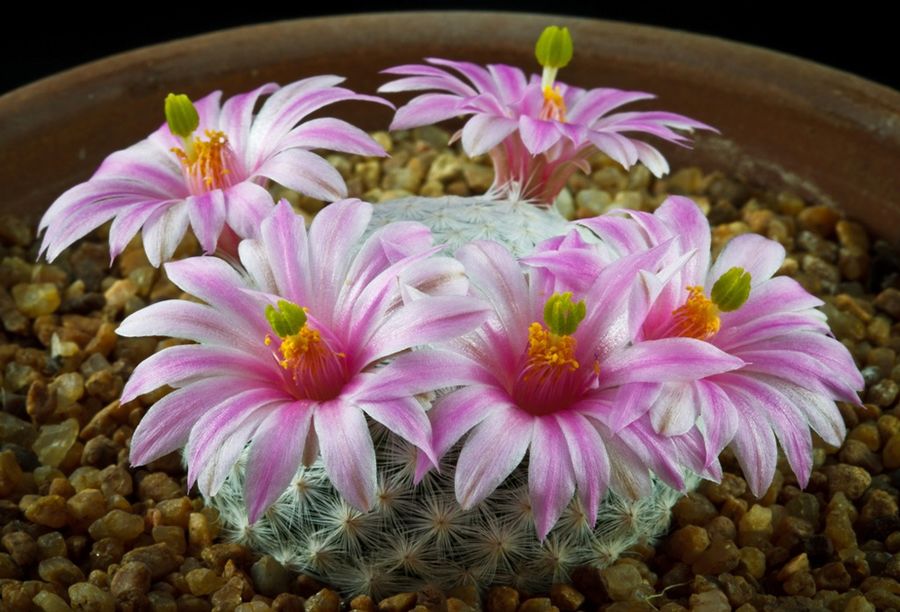
Mammillaria herrerae / Flickr
This cactus is from the genus Mammillaria, which is well known to any cactus grower. The genus itself is very common, but the species Mammillaria herrerae can be found in the wild only in the vicinity of the city of Cadereita (Queretaro state, Mexico), although it is a fairly frequent visitor to the windows of cactus growers. This miniature and very charming cactus, up to 3.5 cm in diameter, produces flowers with a diameter of 2.5 cm. It is precisely due to its popularity among cactus growers and ease of care that the number of wild hererra has decreased by 90% over the past 20 years.
Rare plants and animals of Russia are endangered species that were listed in the Red Book. Actions aimed at preserving the country's natural resources cannot be delayed, in which the creation of nature reserves plays an important role. In this article we will look at some of the most rare species plants in Russia.
Reasons for disappearance
The main reason for the disappearance of plants is economic activity people: grazing livestock, frequent plowing of land, construction of industrial enterprises and cities, railways and highways, airfields, gas and oil pipelines, power lines, swamp drainage. All this leads to the alienation of territories that are occupied by flora and fauna. As a result, some species of plants and animals are disappearing.
Preservation of rare plants
The main role in preserving our plant wealth is given to arboretums and botanical gardens, of which there are 120 in Russia. We have formed a network of nature reserves, covering the main types of landscapes. Sanctuaries were also created, the purpose of which is to protect certain rare plants of Russia. 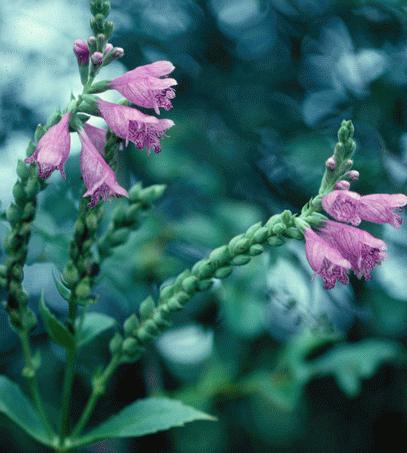
But some of them are present in nature in such small quantities that no botanical gardens, nor reserves can ensure their safety. Consequently, other forms of saving their gene pool are being developed.
Species that are listed in the Red Book are subject to protection throughout the country. Actions that could lead to a reduction in numbers, death, or disruption of the habitat of endangered and rare plants are prohibited.
Rhodiola rosea
Considering the rare plants of Russia, photos of which are presented in this article, you can immediately mention (it is also known as “pink”). It is included in the Red Book of our country. 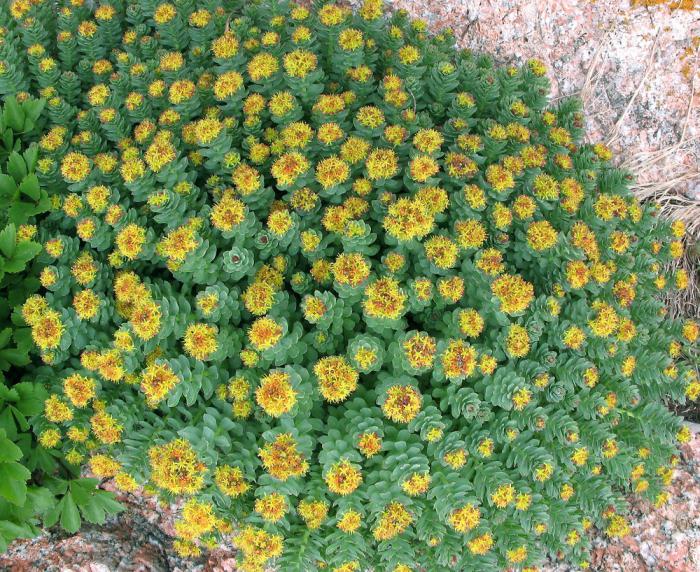
The plant received the name “golden root” because of its rhizome, which has the color of old gilding or bronze with a soft mother-of-pearl tint.
Anemonastrum permian
This plant species is included in the Red Book of the Urals. Its name is translated from Greek as “wind”. It is a perennial herbaceous plant, belongs to the Stems and its leaves are covered with horizontally protruding, dense hairs, slightly deflected downwards. In outline, the root leaves are rounded and kidney-shaped, dissected into 3 rhombic segments, while the lateral ones are almost completely bipartite. But the leaves of the spathe are mostly separate - up to 2/3, sometimes whole. On average there are 2-6 flower stalks. At the very beginning of flowering, they are equal in length to the leaves of the spathe, then several times longer than them. Strongly elongated when fruiting, covered with thin, sparse, slightly curly hairs. The plant has flowers 2-3 cm in diameter, the perianth has white, elliptical leaves. The fruits are about 7 mm long.
Violet, cut
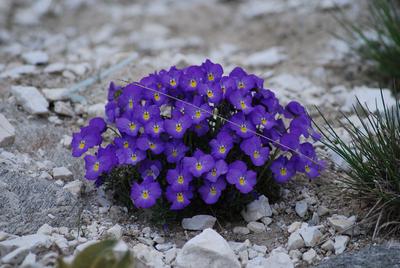 It should be noted that this is one of the most delicate and beautiful flowers. It can be found in meadows, edges of coniferous forests, river banks, rocky slopes. The main charm of the flower is its purple corollas. This type reproduces with the help of seeds, and they are not formed every year, therefore, the fragrant violet was also included in the list of “Rare Plants of Russia”.
It should be noted that this is one of the most delicate and beautiful flowers. It can be found in meadows, edges of coniferous forests, river banks, rocky slopes. The main charm of the flower is its purple corollas. This type reproduces with the help of seeds, and they are not formed every year, therefore, the fragrant violet was also included in the list of “Rare Plants of Russia”.
Yellow water lily
It got its name from its closest relative - the white water lily. It grows in shallow water, with its leaves located both under and above the water. The yellow water lily officially received the name “water lily” for its interesting fruit. It blooms all summer with yellow, large, almost spherical flowers. They are used for bouquets (even though they are not placed in a vase), as well as for medicinal purposes (even official medicine recognizes the properties of the plant).
Bell dolomite
This is a flower that grows only in our country, in Ingushetia, North Ossetia, Kabardino-Balkaria, Dagestan, Chechen Republic. It has white, very beautiful flowers located on thin long stalks. It is plucked for its decorative appearance; in addition, its numbers drop very sharply due to construction work and road construction in the places where it grows.
Lily saranka
 Speaking about the rarest plants in Russia, one cannot fail to mention this species. Saranka lily (badun, curly, royal curls, oil lily) - cute snow-white, pink or lilac flowers with small dark dots with curved petals that bloom in mid-summer. The Siberian forest-steppes and steppes are considered the homeland of this lily. There is a legend that it gives vigor, fortitude, stamina and courage to warriors. The flower is very beautiful in bouquets, and its tubers are edible. But, besides beauty, he also has medicinal properties, which further contributed to its destruction.
Speaking about the rarest plants in Russia, one cannot fail to mention this species. Saranka lily (badun, curly, royal curls, oil lily) - cute snow-white, pink or lilac flowers with small dark dots with curved petals that bloom in mid-summer. The Siberian forest-steppes and steppes are considered the homeland of this lily. There is a legend that it gives vigor, fortitude, stamina and courage to warriors. The flower is very beautiful in bouquets, and its tubers are edible. But, besides beauty, he also has medicinal properties, which further contributed to its destruction.
Spotted palmate root
It belongs to the Orchidaceae family. Found in the European part of the country. In early summer, purple flowers appear on racemose inflorescences, surrounded by spotted leaves. In addition to being decorative, these rare Russian plants, or rather their tubers, have healing properties. The powder made from them has an enveloping, anti-inflammatory, emollient and restorative effect.
Rare and endangered plants of Russia: yellow iris
(swamp, false calamus, water) grows in the European part of the country, along the banks of rivers and lakes, in meadows near swamps. On a branched stem they are placed in bunches with an orange center. Essential oil is made from the plant, which is then used in perfumery, and the rhizomes, which have a delicate violet aroma, are used in the production of liqueurs, wines, and in the confectionery industry.
Peony thin-leaved
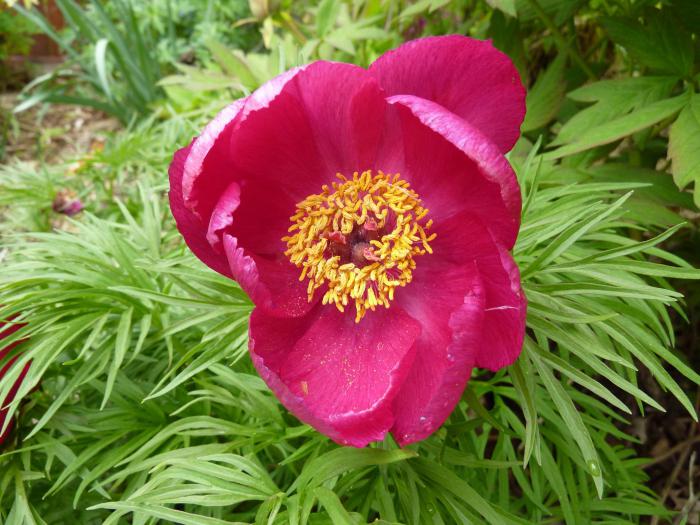 This flower was very common in the sixties of the last century throughout the USSR. Today its population has declined sharply. It is very popular and very expensive in Western Europe, Canada and the USA. It begins to bloom in mid-May, unforgettably and brightly. An adult bush can simultaneously bear several dozen flowers of a rich red hue with yellow anthers.
This flower was very common in the sixties of the last century throughout the USSR. Today its population has declined sharply. It is very popular and very expensive in Western Europe, Canada and the USA. It begins to bloom in mid-May, unforgettably and brightly. An adult bush can simultaneously bear several dozen flowers of a rich red hue with yellow anthers.
Rare plants of Russia: lady's slipper speckled
The Speckled Lady's Slipper is considered a beautiful and exquisite flower in our forests. This plant is found in the Far East and Siberia. This flower lives in mixed and coniferous forests. Two bright green broad leaves cover the graceful stem, and the flower stalk emerges in mid-June. It ends with a bud, which soon turns into a small shoe. Three species of this plant grow in Russian forests: Yatabe's slipper, makranton and calceolus.
Calceolus has a yellow lip, and the cap and long petals are burgundy-brown. There may be 2-4 flowers on a peduncle. But in Macranton they are covered with a fine mesh of burgundy-colored lines over a red-violet or lilac field. At the same time, Yatabe’s shoe is mottled, with purple and yellow specks. 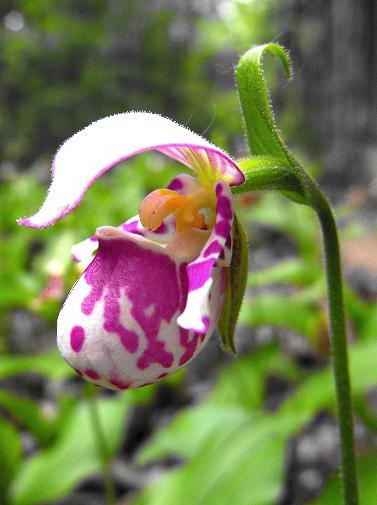
It’s interesting that even a single flower like this is very effective. If you see several of them, it takes your breath away with admiration. These flowers smell amazing, exuding an exquisite aroma. And everyone has their own. All shoes take a very long time to develop and bloom only in the 18th year.

